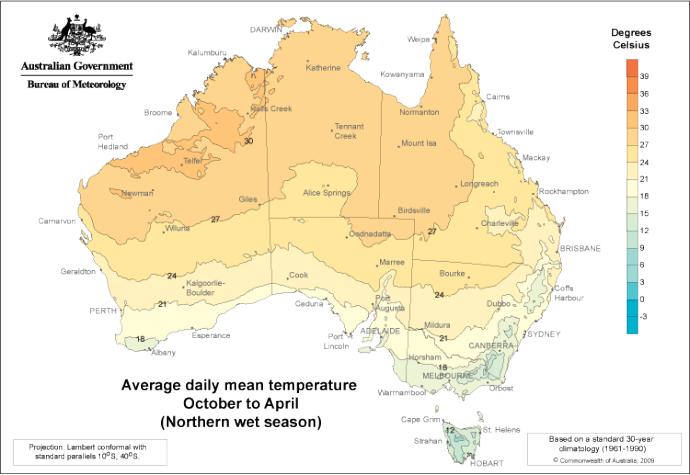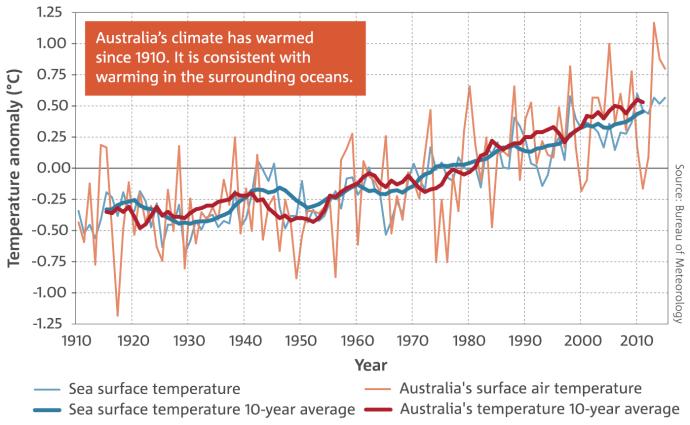To evaluate the effects of temperature on lizard movements, local weather data was collected. Half-hourly weather observations (temperature, humidity, atmospheric pressure, wind speed, rainfall) were obtained from the Bureau of Meteorology weather stations close to the study sites (Argyle Airport, WA, 90 km from the NT field site, 95 km from the WA field site, and Kununurra Airport, WA, 50 km from the NT field site, 12 km from the WA field site). Kununurra has been generally shown to be colder than the Keep River area. In this research, only the effect of temperature was assessed, because of its well-known influence on lizard’s daily activities.
The average temperature during the wet season in both study sites is 30°C, while during the dry season average temperature is something lower and it is around 24°C .


Since 1910, Australian climate has warmed with around of 1 °C increase in both surface air and sea temperatures. Extreme heat events became more frequent across large parts of Australia. Except in parts of northern Australia, the number of days per year over 35° has increased (Australian Bureau of Meteorology). Bureau of Meteorology also reported that years of 2009, 2010 and 2011, with a special accent on 2011, were years with extreme weather patterns. This year has been described as a year of floods, since incredible amounts of rain were recorded in the whole Australia territory.

Responsible for this page:
Director of undergraduate studies Biology
Last updated:
05/19/17
